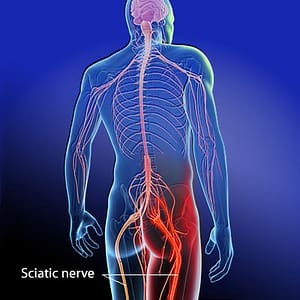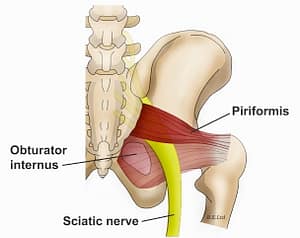When someone has pain that runs down their legs, it is often called sciatica. Yet it isn’t always so simple, it might be piriformis syndrome instead. Some people think they are the same thing, but there are some important differences between them.

Sciatica is compression of the sciatic nerve in the lower back. Piriformis syndrome is compression of the same nerve in the hip by the pirifomis muscle (hence pirifomis syndrome.) In about 15% of the population, the sciatic nerve passes through the pirifomis muscle. For these people, when the piriformis reaches a certain level of tension, it will compress the sciatic nerve. Piriformis syndrome causes the same sensations as sciatica, but it has a different cause.

For sciatica, you have decompress and release restrictions through the lower back. For piriformis syndrome, the focus needs to be the hip. With both, you want to trace the nerve’s pathway and make sure there are no further restrictions along the way.
There is more to consider, of course. Things to consider include:
Are there postural or ergonomic issues that need to be addressed?
Are there muscular imbalances that need corrective exercises?
Is there a misalignment of the hips or sacrum.
Is there referred tension form the organs?
Is the person’s diet is excessively inflammatory and needs to be tweaked?
Or do the organs need to be manually released?
Regardless, these problems are not unsolvable. Sometimes the fix is relatively simple, and sometimes it takes a multifaceted approach. What’s important is figuring out the root of what’s going so you can do something about it. I hope this article helps to clear up some misconceptions about the differences between sciatica and piriformus syndrome.
In Health,
Eli Mead

